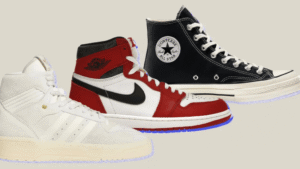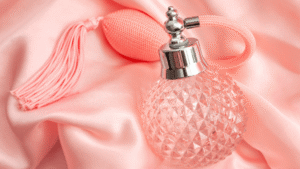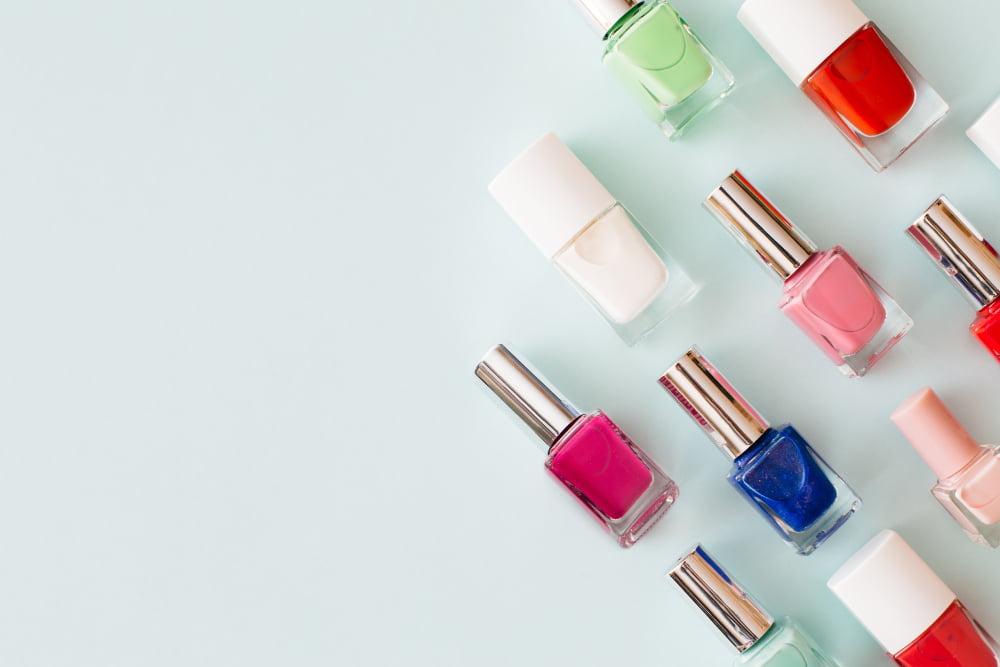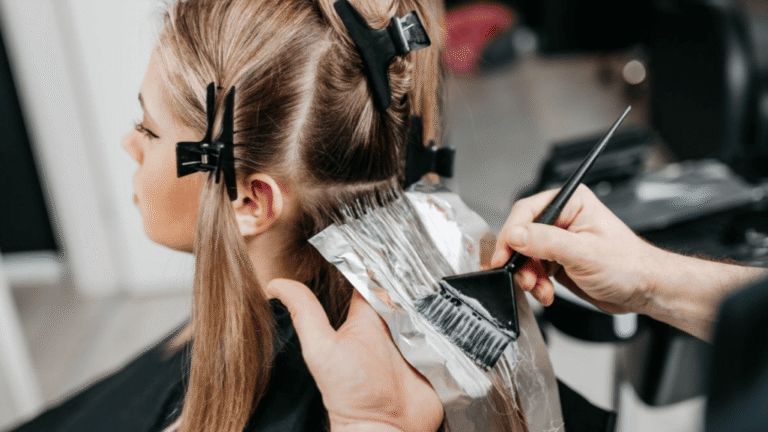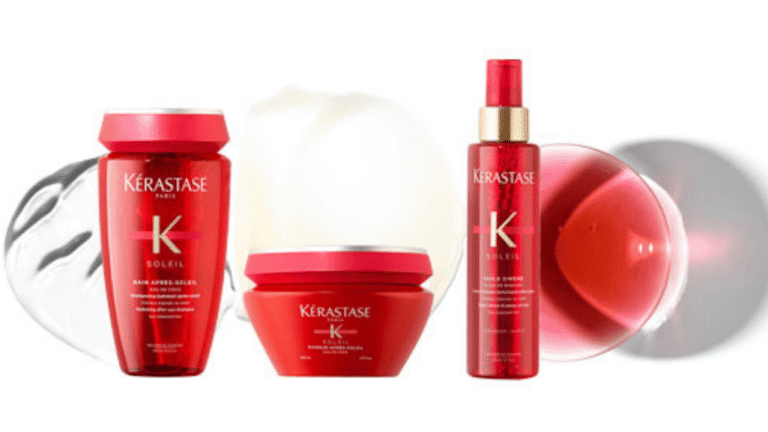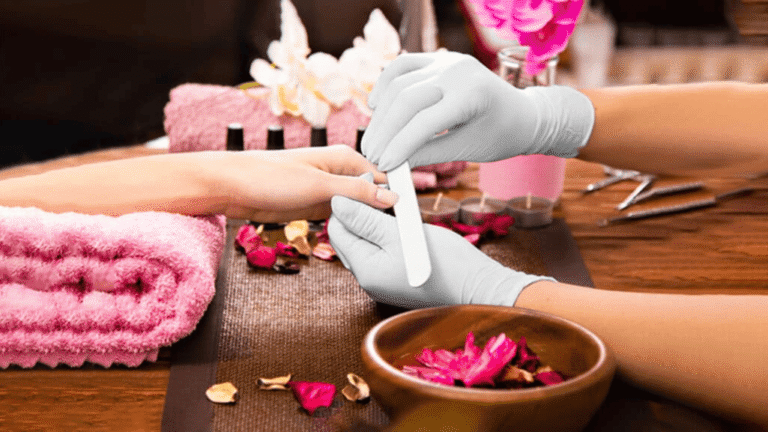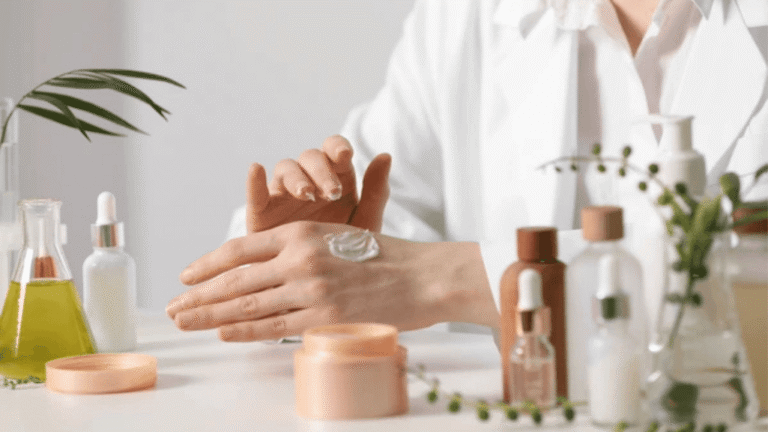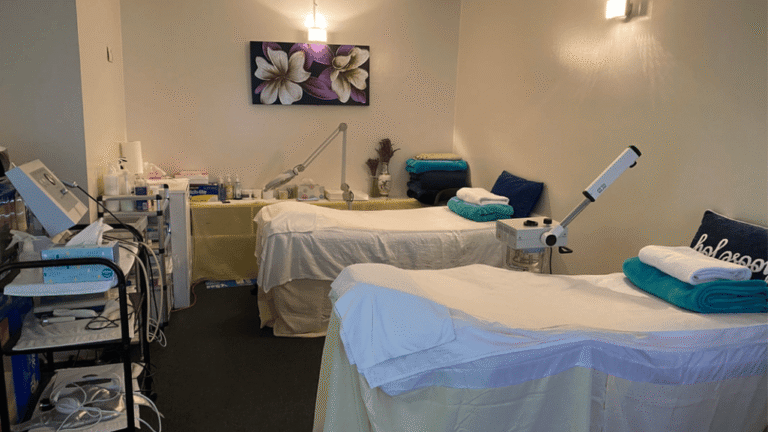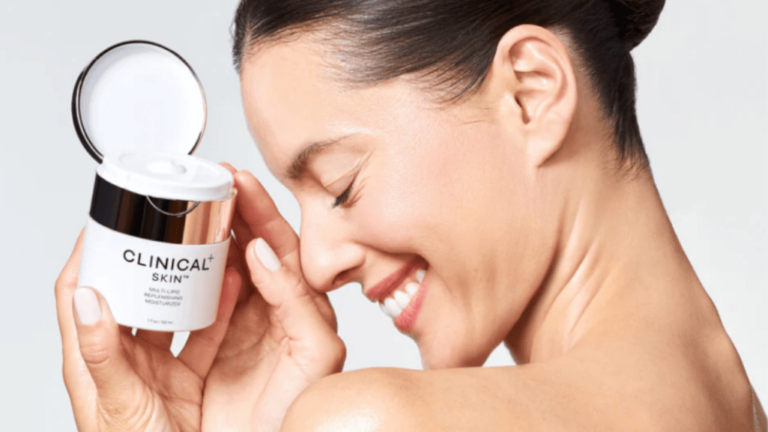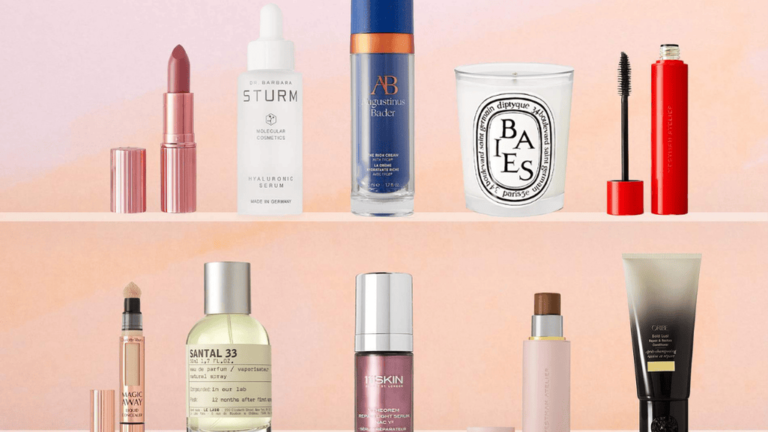Giving your nails proper care is essential for maintaining their health and appearance. To achieve the best results, it’s important to have a good understanding of the different nail care products available in the market. By familiarizing yourself with these products, including their regulations, safety guidelines, and common ingredients, you can make informed choices and ensure optimal nail care.
Key Takeaways:
- Understanding nail care products is crucial for proper nail care.
- Familiarize yourself with regulations and safety guidelines governing these products.
- Common ingredients in nail care products can impact safety and effectiveness.
- Knowing about the anatomy of a nail can help you better care for them.
- Having the right tools is essential for effective nail care.
How Nail Products Are Regulated
Nail products, whether for home or salon use, fall under the regulation of the Food and Drug Administration (FDA). These products are classified as cosmetics and are required to be safe for consumers when used according to label directions. While the FDA does not require pre-approval before the marketing of nail products, they have the authority to take action against non-compliant products or violators of the law.
It’s important for consumers to understand that nail products are not subject to the same level of regulation as medical devices or prescription drugs. However, the FDA still plays a crucial role in ensuring the safety and labeling accuracy of these cosmetics.
The FDA defines cosmetics as “articles intended to be applied to the human body for cleansing, beautifying, promoting attractiveness, or altering the appearance.” Nail products, including nail polishes, artificial nails, and nail strengtheners, fall under this classification. The agency focuses on ensuring that these products do not contain harmful substances and are labeled accurately to inform consumers about their proper use.
The FDA’s regulatory oversight includes monitoring cosmetic product safety through ingredients and product labeling. Nail product manufacturers are responsible for conducting appropriate testing to ensure their products are safe for use. However, it is important for consumers to be aware that the FDA does not test or approve cosmetic products before they are sold to the public.
In cases where the FDA identifies potential safety concerns, they can take action such as issuing warning letters, seizures, or even pursuing legal action against the manufacturers or distributors of non-compliant nail products.
The Role of the FDA in Nail Product Regulation
The FDA enforces regulations related to nail products by:
- Reviewing cosmetic ingredient safety
- Establishing good manufacturing practices
- Monitoring cosmetic labeling claims
- Reacting to safety concerns and adverse events
Through these measures, the FDA aims to protect the public from potential harms associated with the use of nail products. By providing guidelines and regulations, the FDA ensures the integrity and safety of cosmetic products, including those used for nail care.
It is essential for consumers to be aware of the FDA’s role in regulating nail products and to exercise caution when using these cosmetics. Following the directions on product labels and reporting any adverse reactions or safety concerns to the FDA can contribute to safer and more informed use of nail products.
| Key Points: |
|
|---|
Using Nail Products Safely
When it comes to nail care, using nail products safely is paramount. By following the labeled directions and taking necessary precautions, you can protect yourself and ensure a safe and enjoyable experience with your nail products.
Some ingredients in nail products can be harmful if they come into contact with your eyes or if they are swallowed. It is crucial to handle these products with care and avoid any accidental ingestion or exposure.
To ensure safety while using nail products, it is recommended to:
- Read and follow the instructions provided on the product packaging.
- Keep nail products out of reach of children and pets.
- Wear gloves or use protective barriers, such as a cuticle cream, when appropriate.
- Work in a well-ventilated area to minimize exposure to fumes.
- Avoid using expired or old nail products.
If you experience any adverse reactions or side effects from using nail products, it is essential to contact a healthcare professional or report it to the FDA. By doing so, you contribute to the overall safety and regulation of nail products in the market.
Remember, your safety should always come first when using nail products. By taking precautions and being mindful of proper usage, you can enjoy beautiful nails without compromising your well-being.
Some Common Nail Product Ingredients

When it comes to nail products, it’s important to know exactly what you’re applying to your nails. Understanding the ingredients in nail care products is crucial for your safety and overall nail health. Here are some common ingredients found in various nail products:
- Acetonitrile: Often used in artificial nail removers, acetonitrile is a solvent that helps break down the nail polish or gel.
- Formaldehyde: Nail hardeners and polishes may contain formaldehyde, which is used to strengthen and bond the nail.
- Methacrylate Monomers: Acrylic nails are made using methacrylate monomers, which provide the structure and durability to the artificial nails.
- Phthalates: Nail polishes may contain phthalates, which help to improve the flexibility and durability of the polish.
- Toluene: Toluene is a solvent often found in nail polish and is responsible for giving it a smooth and even texture.
While these ingredients are commonly used in nail products, they may raise specific safety concerns. It is essential to be informed about the ingredients and potential risks associated with their use. Understanding the composition of nail products allows you to make informed choices and prioritize your nail health and safety.
The Importance of Safety
“Being aware of the ingredients in your nail products is crucial for your safety. By understanding what goes into your favorite nail polishes and removers, you can avoid potential risks and make informed decisions about your nail care routine.” – Dr. Emma Peterson, Dermatologist
Next, let’s explore the anatomy of a nail, understanding the different layers and structures that make up this small yet essential part of our body.
The Anatomy of a Nail
Understanding the anatomy of a nail is crucial for proper nail care. Nails are composed of layers of keratin protein and have a structure that includes the nail matrix responsible for nail growth and the cuticle that protects the nail plate. Knowing about these components can help in maintaining healthy nails.
The nail structure consists of several layers, each with a specific function. The nail plate, also known as the nail body, is the visible part of the nail that is composed of hardened keratin cells. Underneath the nail plate is the nail bed, where blood vessels and nerves are located.
The nail matrix, located at the base of the nail, is responsible for the production of new cells that make up the nail plate. It plays a crucial role in nail growth and determines the shape and thickness of the nail. When the matrix is damaged, it can affect the appearance and health of the nail.
The cuticle, also known as the eponychium, is a thin layer of tissue that covers the base of the nail plate. Its main function is to protect the matrix and the developing nail from infections. The cuticle acts as a barrier, preventing bacteria and dirt from entering the nail bed.
Proper care of the nail structure is important for maintaining healthy nails. Regularly moisturizing the cuticle and nail plate can help prevent dryness and brittleness. Trimming the nails properly and avoiding excessive trauma can minimize the risk of nail damage or infections.
Nail Layers
In addition to the nail structure, the nail is composed of several distinct layers. These layers provide strength and protection to the nail.
The layers of the nail include:
- The nail plate: The visible part of the nail that we see and often decorate with nail polish.
- The nail bed: The area underneath the nail plate that attaches it to the finger.
- The nail matrix: The area at the base of the nail where new cells are produced.
- The cuticle: The thin layer of tissue that covers the base of the nail plate.
| Nail Layer | Description |
|---|---|
| Nail Plate | The visible part of the nail that provides protection and structure. |
| Nail Bed | The area beneath the nail plate that connects it to the finger. |
| Nail Matrix | The area at the base of the nail responsible for nail growth. |
| Cuticle | The thin layer of tissue that protects the nail matrix and nail bed. |
Fundamentals of Nail Care
Proper nail care is essential for maintaining healthy and beautiful nails. By following a few basic practices, you can ensure that your nails stay clean, trimmed, and moisturized. Let’s explore the core principles of nail care.
Cleaning and Sanitizing
The first step in nail care is to keep your nails clean and free from dirt and bacteria. Use a gentle nail brush and mild soap to clean underneath your nails and around your cuticles. Regularly sanitize your nail tools and avoid sharing them with others to prevent the spread of infections.
Trimming and Shaping
Keeping your nails properly trimmed and shaped is crucial for their overall health. Use a good-quality nail clipper or scissors to trim your nails to a comfortable length. Avoid cutting them too short, as it can lead to discomfort or ingrown nails. For a polished look, file your nails with a gentle nail file to create smooth edges and shape them to your preference.
Moisturizing
Moisturizing your nails and cuticles is important to prevent dryness and maintain flexibility. Apply a nourishing cuticle oil or cream regularly to keep them hydrated. Massage the product into your nails and cuticles to stimulate blood circulation and promote healthy nail growth.
Avoiding Nail Biting
Nail biting can have negative consequences on both the appearance and health of your nails. It can lead to nail damage, infections, and even oral health issues. If you have a habit of nail biting, try to find healthier alternatives, such as chewing gum or using stress-relief toys.
Protective Gloves
When engaging in activities that may expose your nails to harsh chemicals or excessive moisture, such as washing dishes or cleaning with detergents, consider wearing protective gloves. This will help maintain the integrity of your nails and prevent them from becoming weak or brittle.
Gentle Treatment
Handling your nails with care is crucial for their overall health. Avoid using your nails as tools for opening cans or scratching surfaces, as this can lead to breakage and damage. Use appropriate tools and avoid excessive force to protect your nails from unnecessary stress.
Allowing Them to Breathe
While it’s fun to wear nail polish and experiment with different colors and designs, it’s important to allow your nails to breathe. Take breaks from nail polish occasionally to give your nails a chance to recover and breathe. This will help prevent discoloration and maintain their natural beauty.
Incorporating these fundamental nail care practices into your routine will help you achieve healthy and beautiful nails. Remember to be consistent and patient, as it takes time for proper nail care habits to yield visible results. Prioritize the health of your nails, and they will thank you with their natural beauty.
Tools For Nail Care
Having the right tools for nail care is essential. It allows you to properly maintain the health and appearance of your nails. Whether you prefer to do your own manicures at home or visit a salon, having the following nail care tools will help you achieve beautiful and well-groomed nails:
1. Nail Clippers or Scissors
Nail clippers or scissors are essential for cutting and trimming your nails. They provide a precise and even cut, preventing any snags or uneven edges. Make sure to choose a high-quality pair of clippers or scissors that are sharp and durable.
2. Nail Files and Buffers
Nail files and buffers are used for shaping and smoothing the edges of your nails. They come in different grits, allowing you to achieve the desired shape and texture. A nail file helps you shape your nails, while a buffer smooths any roughness and adds shine.
3. Cuticle Pushers and Nippers
Keeping your cuticles neat and well-maintained is important for healthy nails. Cuticle pushers help gently push back the cuticles, while cuticle nippers are used to trim any excess cuticle growth. Use these tools with caution and avoid cutting too much of the cuticles, as they serve as a protective barrier against infection.
4. Nail Brushes
A nail brush is a handy tool for cleaning underneath your nails. It helps remove dirt, debris, and any leftover nail polish. Regularly cleaning underneath your nails not only promotes cleanliness but also prevents bacteria buildup.
5. Other Essential Tools
In addition to the above-mentioned tools, there are a few other essentials for nail care:
- Cuticle oil or cream for moisturizing and nourishing the cuticles
- Orangewood sticks for gently pushing back cuticles and cleaning around the nails
- Tweezers for precise nail art application or removing small nail decorations
Investing in high-quality nail care tools ensures that you have the right equipment to achieve professional-looking results. Take care of your tools by keeping them clean and sanitized after each use. Properly maintained tools will last longer and provide better results for your nail care routine.
The Art of Manicure
Manicures are not just about aesthetics; they are also essential for maintaining nail health and well-being. Taking care of your nails can prevent damage and promote strong, beautiful nails. There are different types of manicures that offer various benefits, allowing you to choose the one that suits your preferences and needs.
Types of Manicures
When it comes to manicures, you have a range of options to choose from. Some popular types include:
- Classic manicure: This is a basic manicure that involves nail trimming, shaping, cuticle care, and polish application.
- Gel manicure: Gel polish is applied to the nails and then cured under a UV or LED lamp for long-lasting, chip-resistant results.
- Acrylic manicure: This type involves applying acrylic nail extensions over your natural nails to give them length and strength.
- French manicure: A classic style that features a natural-looking base color with a white tip, giving a clean and elegant look.
- Paraffin manicure: This luxurious treatment involves dipping your hands in warm paraffin wax, which can help to hydrate and soften the skin.
No matter which type of manicure you choose, regular maintenance is necessary to ensure long-lasting results and healthy nails.
Caring for Your Manicure
Once you have enjoyed a beautiful manicure, it is important to take proper care of it to extend its longevity and protect your nails. Here are some tips:
- Avoid using your nails as tools: Using your nails for tasks like opening cans or prying things can cause them to break or chip.
- Wear gloves when necessary: Protect your manicure from harsh chemicals, cleaning products, and excessive water exposure by wearing gloves.
- Moisturize regularly: Keep your hands and cuticles moisturized to prevent dryness and maintain the health of your nails.
By following these care tips, you can enjoy your manicure for longer and keep your nails looking fabulous.
| Manicure Type | Description | Benefits |
|---|---|---|
| Classic | A basic manicure that includes nail trimming, shaping, cuticle care, and polish application. | Provides a clean and well-groomed look. |
| Gel | Gel polish is applied and cured under a UV or LED lamp for long-lasting, chip-resistant results. | Offers a glossy finish and lasts longer than traditional polish. |
| Acrylic | Acrylic extensions are applied over natural nails to add length and strength. | Provides durable and strong nails. |
| French | Features a natural-looking base color with a white tip for a clean and elegant look. | Gives a classic and sophisticated appearance. |
| Paraffin | Involves dipping hands in warm paraffin wax to hydrate and soften the skin. | Leaves hands feeling smooth and moisturized. |
Nail Care for Special Conditions
Special conditions such as brittle nails, fungal infections, nail discoloration, and nail psoriasis require specific care techniques to maintain healthy and beautiful nails. By addressing these conditions with the right approach, you can achieve optimal nail health and appearance. Let’s explore the recommended strategies for each condition:
1. Brittle Nails:
Brittle nails are prone to breakage and splitting. To strengthen them, incorporate the following practices into your nail care routine:
- Avoid frequent exposure to water and harsh chemicals, as they can weaken the nails.
- Apply a nail strengthening product enriched with ingredients like biotin, keratin, and vitamins.
- Keep your nails well moisturized by using a hydrating nail oil or cream regularly.
2. Fungal Infections:
Fungal infections are common and can cause discoloration, thickening, and brittleness of nails. Follow these steps to address fungal infections:
- Keep your nails clean and dry to create an unfavorable environment for fungal growth.
- Trim your nails regularly and file them in one direction to prevent further damage.
- Apply an over-the-counter antifungal nail treatment or consult a dermatologist for prescription medication.
- Avoid sharing nail care tools or using contaminated equipment to prevent spreading the infection.
3. Nail Discoloration:
Nail discoloration can occur due to various factors, including fungal infections, trauma, and excessive nail polish usage. These tips can help you deal with nail discoloration:
- Refrain from using nail polish for a while to allow the nails to regain their natural color.
- Apply a nail brightening treatment or lemon juice to lighten the discoloration.
- Use nail polish remover sparingly and opt for non-acetone formulas to minimize nail damage.
- Protect your nails from excessive sun exposure to prevent further discoloration.
4. Nail Psoriasis:
Nail psoriasis can cause pitting, thickening, and ridges on the nails. These measures can help manage nail psoriasis symptoms:
- Maintain good nail hygiene by keeping the nails clean and dry.
- Apply a corticosteroid cream or ointment prescribed by a dermatologist to reduce inflammation.
- Protect your nails from trauma by avoiding activities that may cause injury or damage.
- Consider wearing gloves while performing household chores to minimize exposure to irritants.
By following these specialized care techniques for brittle nails, fungal infections, nail discoloration, and nail psoriasis, you can promote healthier and more vibrant nails. Remember that seeking professional advice is essential for proper diagnosis and treatment in case of severe or persistent concerns.
Conclusion
Nail care is an essential part of personal grooming, and it is important to have a good understanding of nail care products and practices to maintain healthy and beautiful nails. By being knowledgeable about nail product regulations, using them safely, knowing common ingredients, and following proper nail care routines, you can achieve optimal results and keep your nails looking their best.
Understanding how nail products are regulated, such as by the FDA, ensures that you can make informed choices about the products you use. It is crucial to read and follow label directions, take necessary precautions, and report any adverse reactions to the FDA for your safety.
Being aware of common nail product ingredients helps you identify potential safety concerns and make informed purchasing decisions. Additionally, understanding the anatomy of nails and the fundamentals of nail care provides a solid foundation for maintaining their health and well-being.
Remember, if you have special conditions or concerns, it is always advisable to consult a professional for personalized advice and recommendations. With the proper knowledge and care, you can have beautiful, healthy nails that enhance your overall appearance.
Frequently Asked Questions (FAQs)
Stay ahead in the fashion game with our latest post on Frequently Asked Questions in fashion blogs.
- Nails are composed of layers of keratin protein and have a structure that includes the nail matrix responsible for nail growth and the cuticle that protects the nail plate. Understanding the anatomy of a nail can help in maintaining healthy nails and identifying any potential issues.
- Nail products can contain various ingredients, including acetonitrile in artificial nail removers, formaldehyde in nail hardeners and polishes, methacrylate monomers in acrylic nails, phthalates in nail polishes, and toluene. It is important to be aware of these ingredients and their potential safety concerns.
- It is important to use nail products safely by following labeled directions and taking precautions. Some ingredients in nail products can be harmful if swallowed or come into contact with the eyes. Good ventilation should be ensured while using nail products, and any adverse reactions should be reported to the FDA.
- Nail products, whether for home or salon use, are regulated by the Food and Drug Administration (FDA). They are considered cosmetics and must be safe for consumers when used according to label directions. The FDA can take action against non-compliant products or violators of the law.
- Understanding different nail care products is crucial for properly caring for your nails. It helps you make informed decisions about which products to use and ensures that you are aware of any potential safety concerns or regulations.
- Essential tools for nail care include nail clippers or scissors for cutting and trimming nails, nail files and buffers for shaping and smoothing, cuticle pushers and nippers for maintaining neat cuticles, and nail brushes for cleaning underneath the nails.
- Manicures are not just about aesthetics; they are about maintaining nail health and well-being. Different types of manicures, such as classic, gel, acrylic, French, and paraffin, offer various benefits. Caring for a manicure involves avoiding nail damage, such as using the nails as tools and wearing gloves when necessary.
- Special conditions like brittle nails, fungal infections, nail discoloration, and nail psoriasis require specific care techniques. Strengthening the nails, addressing fungal infections, dealing with discoloration, and managing psoriasis symptoms are essential aspects of nail care in these cases. Consulting a professional is recommended for specialized care.
- Nail care is an essential part of personal grooming. Having product knowledge about different nail care products, regulations, safe usage, common ingredients, and proper nail care practices is key to maintaining healthy and beautiful nails.

